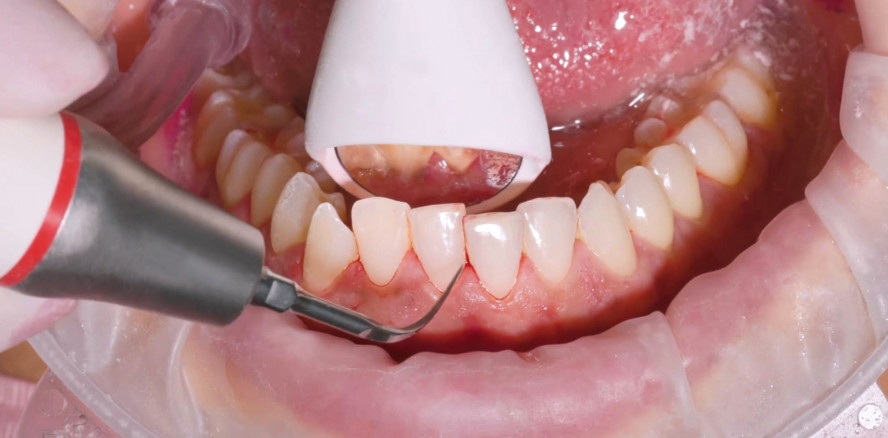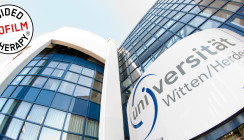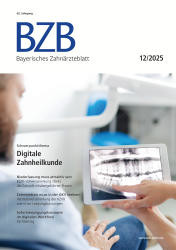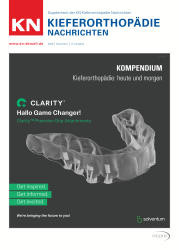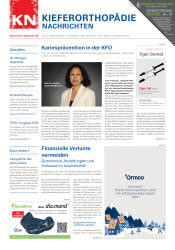Branchenmeldungen 02.01.2023
Making prevention profitable – for patients and the practice
The fact that prevention helps to avoid diseases and the associated problems is well known among patients. Many dentists and their teams therefore offer professional biofilm management and periodontal therapy, but often without employing adequate clinical and economic systems. This article illustrates how to calculate turnover, costs and profits for a sustainable and successful prophylaxis concept. In addition, GBT is used as an example to illustrate how patients can be attracted to the practice and how they can be cared for in the long term.
State-of-the-art prevention provides a variety of services in the dental practice. It reduces the risk of caries and at the same time acts as a central measure for both periodontitis prevention as well as long-term post-treatment care. If prevention is not provided, patients may not only suffer from health problems, but also from functional, esthetic and consequently psychological stress, with a life.1-3 Add to this the economic burden suffered by patients as a result of avoidable treatment costs.
Next to oral homecare, professional prevention is of considerable importance. On the one hand, this involves removing biofilm effectively and gently, and on the other hand, by providing patients with professional education and giving instructions on effective oral hygiene. Here, the comprehensively educated and trained practice team is tasked with creating the framework conditions for optimal care. The fundamentals are always made up of a systematic clinical concept and appropriate equipment. Guided Biofilm Therapy is used in the author's practice (Fig. 1).
Basis for pricing
"Prevention pays off". What sounds lucrative and simple at first glance depends not only on the above professional and
clinical factors but also on a number of business management factors. What is needed first and foremost, is a cost- and profit-oriented pricing structure, although this is not implemented in all practices. This is based on the following greatly simplified principle:
Utilization times price = turnover
Turnover minus costs = profit
The utilization rate corresponds to the number of PMPR treatments within a defined period of time. This is determined by personnel management and practice organization, including scheduling. Appropriate patient communication also plays a very important role, as does a high level of satisfaction among both the team and the patients resulting from the overall concept. Once these conditions are met, the achievable profit will then largely depend on the pricing structure.
The PMPR calculation for statutory healthcare insurance (SHI) patients is based at a minimum on the GOZ (German Dentists' Fee Schedule) code 1040, which is billed according to the amount of work involved or the number of teeth cleaned, with a corresponding multiplication factor. In contrast, the billing items for supportive periodontal therapy sessions for SHI patients are specified by the PAR (periodontitis) guideline. This can also be used for private patients on the basis of the newly reached agreement in terms of analogous positions.
Currently, price increases are also unavoidable in prevention due to increased costs, for example for personnel, consumables or electricity and heating, and should be adjusted if necessary. Those wishing to improve the acceptance of higher prices for prevention should draw patients' attention to cost changes in other areas of everyday life.
The most expensive treatment chair is an empty chair
Personnel is also the crucial cost factor in prevention. If specific specialists (dental assistants, dental hygienists or trained dental nurses) are employed, their wages are fixed costs. Consequently, these costs are also incurred if no treatment is performed. To avoid losses, care must therefore be taken to maximize utilization of the "Prevention Profit Center". Personnel costs can be calculated based on the hourly rate or salary. The hourly rate can be easily determined by the accountant; salary costs are known and prorated if a prevention specialist is only employed part-time. For the exemplary calculation with the GBT calculator, the effective personnel costs can be determined and summarized in both ways (Table 1).
Further costs are allocated to prevention in consultation with the accountant using a practice-specific cost allocation key. A distinction must be made between fixed costs for additionally required space (rent or financing in the case of purchase, plus ancillary costs), depreciation for treatment equipment including prevention appliances, and material costs. For space costs, it is reasonable to consider the square-meter percentage of the prevention room. In addition, there is a flat rate for sharing functional rooms, i.e. the sterile area, X-ray and front desk.
For example, this share is reduced if the prevention room is also used for periodontitis treatment.
The purchasing and financing costs of furnishings and equipment for the prevention room can also be calculated on a pro rata basis for the utilization share of PMPR according to the depreciation tables. As these are also fixed costs, the profitability of the equipment is largely based on their utilization for prevention. If they are also used for other treatments, then this applies only to a correspondingly limited extent.
In principle, it only makes sense to invest in equipment which ensures that patients can receive treatment according to state-of-the-art practice and science. Furthermore, this should also be suitable for preventive professional tooth and oral cleaning (PMPR) as well as for the therapy and long-term follow-up care of periodontal and peri-implant diseases. As the example in Table 1 illustrates, the share of fixed costs for space costs and depreciation is lower than the personnel costs by a factor of about 5. Material costs arise only in connection with treatment.
Significance of the clinical concept
A prevention standard is necessary to provide the same high clinical benefit to all patients. This includes uniform workflows, professionally sound and standardized patient communication, and the same level of continuing education for the entire practice team. By setting a prevention standard, it is also possible to define the average time required for a session and the utilization of prevention and patient schedules to use the available working time of the prevention staff as best possible in terms of creating value. At the same time, all these factors are crucial for effective practice organization and to ensure a "one-stop" service for patients.
In the author's experience, these requirements can be optimally addressed with Guided Biofilm Therapy (GBT) (Fig. 1). Numerous studies demonstrate that the AIRFLOW® Prophylaxis Master in combination with the AIRFLOW® PLUS powder can be used for all treatments and is extensively documented scientifically (Fig. 2).4-7 The removal of biofilm and dental calculus is minimally invasive, yet particularly effective and economical - and last but not least, almost painless when used correctly. Patients prefer this special form of prevention to conventional methods.8,9 According to daily experience, which is consistent with the results of an internal study conducted in the practice, patients are very often even downright enthusiastic. As a consequence, they happily come back to the practice for regular PMPR and periodontal follow-up treatments and also act as recommenders.
Conclusion: a win-win concept for both the patient and the practice
Painless treatment with maximum possible removal of the pathogenic biofilm represents a special source of enthusiasm for patients. This objective can be achieved most reliably with the clinical concept of Guided Biofilm Therapy and the associated state-of-the-art devices, instruments and powders. Patients should be clearly made aware that prevention will also continue to be a medically necessary therapy in the futur.
To ensure economic success of the practice at the same time, a well-trained and motivated team, together with a well structured price calculation and regular controlling, are necessary. Once these framework conditions are in place, prevention is a service that can be delegated, which brings significant health benefits for patients and is highly attractive for the practice from an economic perspective.
Literature can be requested from the editorial office at dz-redaktion@oemus-media.de.
Authors: Dr. Ralph Heckel, Tax Consultant Dr. Ann-Kathrin Arp

